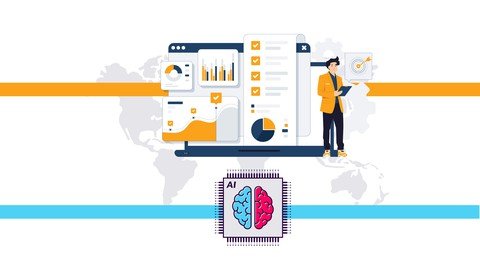
Free Download Spss Essentials Beginner To Advanced Analytics
Published 11/2023
MP4 | Video: h264, 1920x1080 | Audio: AAC, 44.1 KHz
Language: English | Size: 1.30 GB | Duration: 2h 50m
SPSS Made Easy: A Beginner's Guide to Data Analysis
What you'll learn
How be an independent Researcher
The fundamentals of SPSS, including data entry, data manipulation, and descriptive statistics.
How to conduct inferential statistical tests, such as t-tests, chi-square tests, ANOVA. predictive models and interpret SPSS results
How to use Chat GPT and Google Bard in SPSS and advanced SPSS techniques, such as factor analysis, cluster analysis, and time series analysis.
How to use SPSS to build regression models
Requirements
No prior knowledge of SPSS or Statistics is required
Must have a copy of SPSS software to practise the steps taught in this course.
Description
SPSS Essentials: Beginner to Advanced Analytics is a comprehensive course designed to teach you how to use SPSS for data analysis at all levels. This course is perfect for beginners who have no prior experience with SPSS, as well as for those who want to brush up on their skills and learn more advanced techniques.In this course, you will learn how to:Import and manage data in SPSSCreate and edit variablesConduct descriptive statisticsPerform hypothesis testsConduct regression analysisCreate and interpret charts and graphsUse SPSS syntax to automate tasksUse of Google bard ai and Chat GPT for data analysis.Perform more advanced statistical analysis techniques, such as time series analysis, factor analysis, and structural equation modeling.You will also learn about the different types of data that SPSS can handle, as well as the different types of statistical tests that can be performed.This course is taught in a clear and concise manner, with plenty of examples and exercises to help you learn the material. By the end of this course, you will have the skills and knowledge you need to use SPSS to analyze your own data and make informed decisions, regardless of your level of experience.Who Should Take This Course?This course is ideal for:Students in any field who need to learn how to use SPSS for data analysisProfessionals who need to use SPSS for their jobAnyone who is interested in learning more about data analysis and statisticsPrerequisitesNo prior knowledge of SPSS is required. However, a basic understanding of statistics would be helpful.Course Materials Video lessons Exercise files ( All file and PDF Guide book Attach in Lecture 2 ) PDF Guide BOOKStudents will be assessed on their understanding of the course material through quizzes.Upon completion of the course, students will receive a certificate of completion which enhance their CV.
Overview
Section 1: Introduction to SPSS
Lecture 1 Overview of SPSS, its purpose, and installation
Lecture 2 Navigating the SPSS interface: Data Editor, Variable View, and Output Viewer
Section 2: Data Input and Management
Lecture 3 Data Input Methods
Lecture 4 Understanding Data Types and Defining Variables in Variable View
Lecture 5 Data Cleaning Techniques
Section 3: Data Exploration and Descriptive Statistics
Lecture 6 Normality Test in SPSS
Lecture 7 Calculating and interpreting descriptive statistics
Lecture 8 Data manipulation in SPSS
Lecture 9 Introduction to visualization techniques
Section 4: Hypothesis Testing
Lecture 10 Introduction to hypothesis testing and types of tests
Lecture 11 One-sample t-tests
Lecture 12 Paired T-test
Lecture 13 Chi-Square Test
Section 5: Analysis of Variance (ANOVA)
Lecture 14 One way ANOVA
Lecture 15 Two Way ANOVA
Section 6: Regression Analysis
Lecture 16 Simple linear regression
Lecture 17 Multiple regression and model building
Section 7: Advanced Data Analysis Techniques
Lecture 18 Factor analysis
Lecture 19 Cluster analysis for grouping data
Lecture 20 Survival analysis for time-to-event data
Section 8: SPSS Syntax and Automation
Lecture 21 Introduction to SPSS syntax
Lecture 22 Writing and executing basic syntax commands
Lecture 23 Creating and saving custom procedures with syntax
Section 9: Reporting and Interpretation
Lecture 24 Data Visualization with graphs in SPSS
Lecture 25 Interpreting and formatting SPSS output
Lecture 26 SPSS results transfer in MS word
Section 10: Used of Ai in SPSS Data Analysis
Lecture 27 AI techniques in combination with SPSS
Lecture 28 Chat GPT and Google bard for helping hand
Lecture 29 Hands on Practice on Chat GPT and Google
Section 11: Final with Quiz
Beginner learners who aim to be an independent researcher,Who want to be an independent researcher
Homepage
Recommend Download Link Hight Speed | Please Say Thanks Keep Topic Live
No Password - Links are Interchangeable






